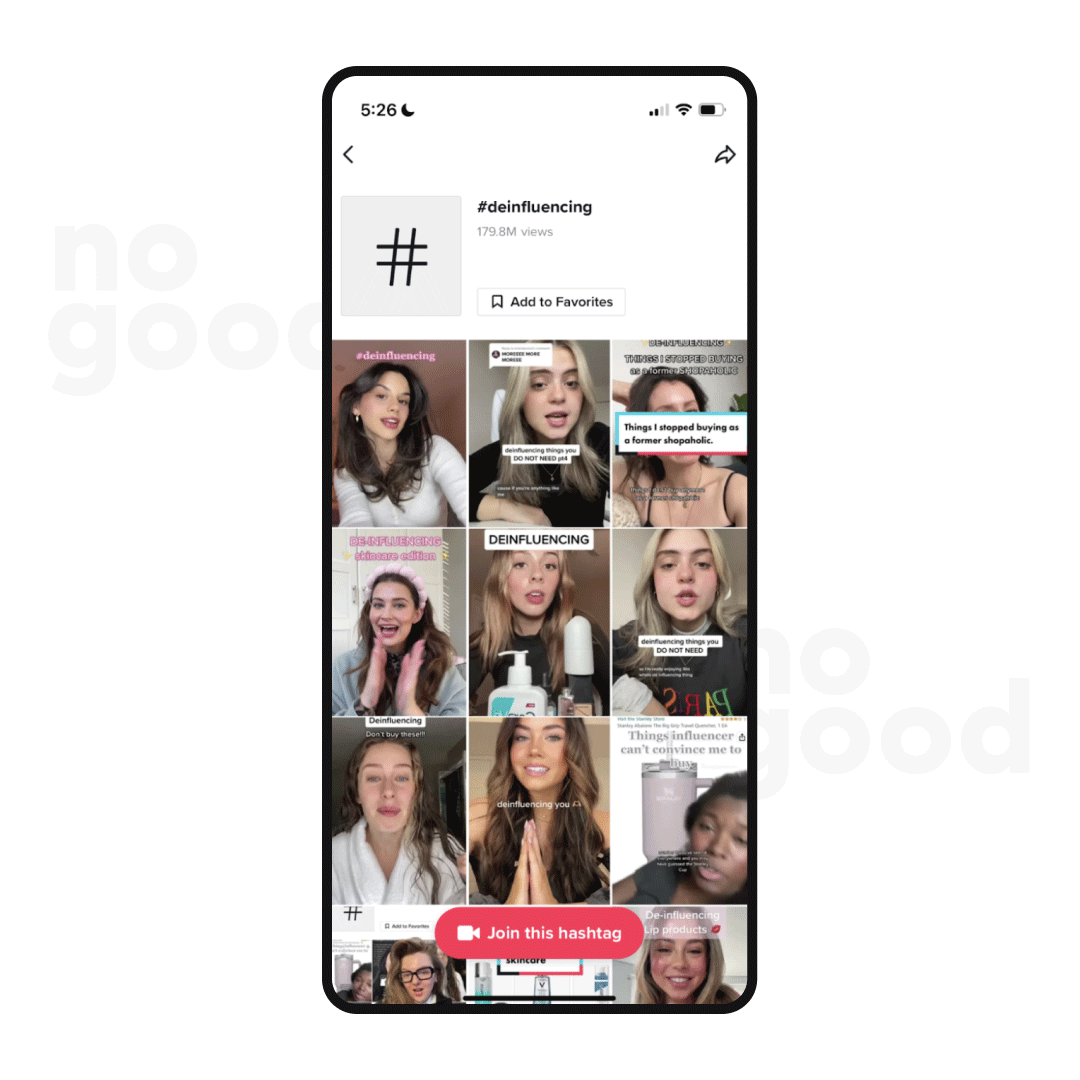If you are even the slightly tuned into the TikTok world, you have heard of the most recent massive trend of #Deinfluencing. Though the name suggests otherwise, deinfluencing is not the end of the influencer era. Instead, it is a mass representation of the marketing pendulum that is constantly swinging. However, brands better be paying attention because though this isn’t a sign to end your influencer campaigns, it is a call for a new strategy.

What is #deinfluencing
Deinfluencing is a movement meant to combat mass consumerism and irresponsible buying. We have seen products become popular over the years or trends spread across nations (if someone brings back the layered tank tops of 2009 I will personally find you), but TikTok has created a new meaning to the word “trend”. Products that go viral on that platform have a completely different kind of surge.
For example, Poppi Prebiotic Soda took to TikTok pretty early in the game and now has a following of over 250K and has gained almost 3 million likes on the platform. The brand “estimates that its digital marketing efforts in total are driving an 80% lift in offline sales, and that TikTok accounts for roughly 30% to 40% of that lift, based on other industry data the brand has seen.”
We have seen products like the Ugg minis, Charlotte Tilbury Highlighter Wands, Supergoop sunscreen, and many many more that have spread across the platform like wildfire driving thousands of dollars in sales.
However, this then created a problem.
The generation that fuels TikTok and heavily dictated the success of these products is now turning around and realizing the consequences of these mass trends. Consumers are bringing to light the overconsumption, irresponsible spending, and unsustainable habits that come from influencer after influencer pushing these products.
Below are some examples of these videos, but in a nutshell, the creator will “deinfluence” you to stop buying a popular product just because everyone is buying/talking about it. In @christina.mychas‘s video where she outlines products she stopped buying, Christina explains that she “bought those things purely to keep up”.
The trend is meant to encourage people to stop and think before they make purchases. Though some creators are going in on products, the majority are not bashing these companies but rather explaining that not everything is for everyone.
Is this the end of influencer marketing?
Absolutely not – this is merely the newest evolution of what influencing means. There are a couple of things to note when we analyze this trend…
- INFLUENCERS are also participating in this. Influence is influence, no matter what action you are prompting. The creators who are keeping up with their community and who understand the need for authenticity will use this as another means of connection.
- If you watch some of these videos, they are turning more into “not that, but this” style, where the creator is essentially giving dupes for well-known and popular products. So really there is still a push to buy something, just from an angle of giving a true opinion rather than hopping on a bandwagon.
How should brands use Deinfluencing in their strategy?
If we take a wide lens to the marketing landscape, the deinfluencing trend was inevitable. Americus Reed II, marketing professor at Wharton, explained to Huffington Post, “What we often see in marketing, which is deeply integrated with pop culture, is a constant pendulum of trend and counter trend; an ebb and flow such that when one consumer sentiment goes extreme, there’s a natural course correction to move the other way and towards the ‘middle’”.
The information being given through this trend is gold in terms of consumer insights. As Madison Potter points out, “Deinfluencing is unique in the way that creators are directly telling brands there’s a lack of trust. It’s a chance for brands to listen to consumers and adjust their marketing efforts.”
So here are the three moves brands can make using these new insights…
- Adjusting Ad Copy
You heard them! Pushy sales messaging that is impersonal and ingenuine isn’t going to drive any significant action. Consumers are looking for brands with personality, with a clear voices, and who pull back the curtain to speak directly to them, not at them. Don’t be scared to show your funny side or even dabble in some self-deprecating humor. Being able to understand your flaws is humanizing and will ultimately gain consumer trust, and therefore consumer loyalty.
- Rethink Your Influencer Strategy
Pay close attention to the influencers you choose to partner with and how you are communicating with them on how to showcase your product. Are you paying attention to influencers who have organically talked about your product before? Does that influencer speak and deliver in a way that aligns with your brand voice? Does your creative brief give the influencer creative freedom so they can present your product in a language that is best for their audience? Like we said, influencing is not dead. Mass consumption is.
- Invest in Community Engagement and Management
Your community strategy directly feeds into your growth and sales. Think about how you use your external channels (social, email, push) to engage your audience, and ensure you maintain a strong connection with them. If you are shouting to the masses and are not listening to their feedback, you will have no idea what their latest sentiments are, what trends they follow, what jokes will resonate, etc. All of this feeds into your ad copy, website copy, sales messaging, and more.
Hopefully, we have #deinfluenced you from thinking that influencing is dead. This is an extraordinary opportunity in terms of consumer insights for brands, and those who take the time to understand their community strategy will rise above the others.







